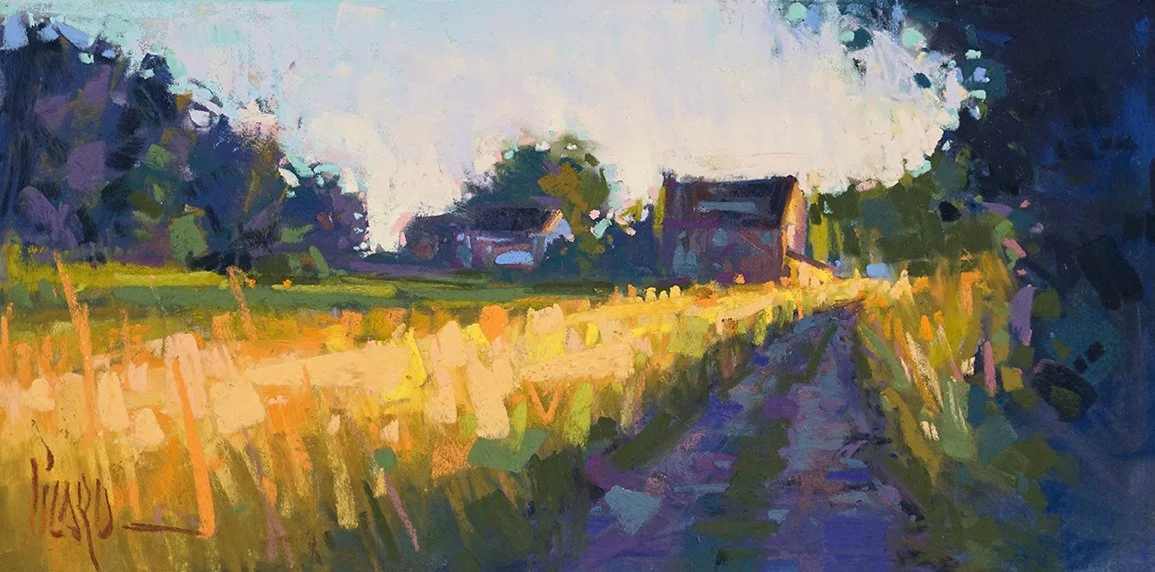When Does Less Become More?
I've been fascinated by this question lately:
What happens when you distill a figure down to its absolute essence?
Not the careful rendering or subtle details. Just bold shapes, powerful gesture, and expressive color.
The answer surprised me. When you take away all the complexity, the gesture itself becomes the story – pure, powerful, and undeniable.
I recently completed two dancer paintings that explore this idea. Instead of my usual painterly approach, I simplified these ballet gestures down to their graphic core. Posterizing the reference, using bold tools like markers to distill the pose, and chunky pastels to capture the gesture were all part of the process. But what changed the experience most dramatically was limiting each painting to a single color against grays—one in vibrant pink, the other in turquoise blue.
Ascension - Expression in Pink, Charcoal & Soft pastel
Here's what I learned about capturing powerful gestures:
1. Gesture becomes everything when all else fades away. By reducing the figure to essential shapes and a monochromatic palette, nothing distracts from the gesture itself. The contour line, that sweeping arc of an arm, the elegant curve of the spine, carries all the expressive power. You see the movement, the energy, the dancer's spirit in a fresh way that can get lost when focusing on rendering every detail.
2. Bold tools invite bold decisions. Designing with markers and paint pens changes how you see the figure. Thumbnail sketching with these tools won't let you fuss or render. They demand commitment in values and shapes. And that commitment translates into confident, expressive work that captures the essence of motion.
Crescendo - Expression in Turquoise, Charcoal & Soft pastel
3. A single color speaks louder than many. Wow. Using only pink or turquoise against monochrome grays was surprisingly effective. Instead of wrestling with complex color relationships, that one vibrant hue carries all the emotional weight. Pink feels light, ascending, free. Turquoise feels dynamic, building, and powerful. Gesture and expression have the greatest impact when color steps back and lets movement take the lead.
The irony? By doing less—fewer details, one color, fewer careful marks—these paintings feel more powerful than if I'd rendered every fold of fabric and subtle skin tone.
Sometimes the strongest statement is the simplest one.
If you've ever felt overwhelmed by trying to capture every detail in your figure work, I encourage you to experiment with graphic simplification. Posterize a photo to just a few values. Grab some bold tools to distill your design. Try working with just one expressive color. See what happens when you let go of perfection and reach for pure expression instead.
You might be surprised by what emerges.
Keep painting,
Alain






































